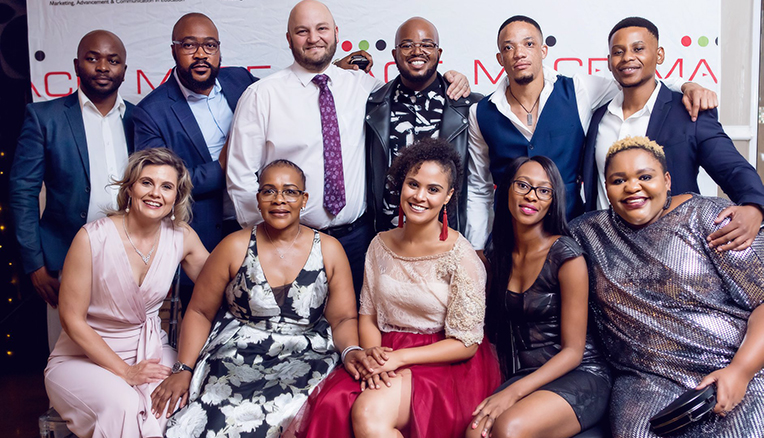The
Department of Communication and Marketing again received national and international recognition for its communication and awareness campaigns this year.
On 28 November 2019, the department made a big splash at the national
Marketing, Advancement, and Communication in Education (MACE) 2019 Excellence Awards, winning multiple awards for its work in communication and marketing. Scooping up five awards, the department earned accolades for the communication campaign on the MT Steyn statue review process, the Kovsie App, and awareness campaigns for gender-based violence and the Kovsies Multilingual Mokete.
This comes on top of the two awards the department won at the
International Association of Business Communicators (IABC) Africa Silver Quill Awards during an awards ceremony presented in Centurion, Gauteng, on 16 October 2019. During this event, the department was also acknowledged with an Excellence Award for the Kovsie App communication campaign and a Merit Award for the communication campaign on the MT Steyn statue review process.
Celebrating the best in marketing, advancement, and communication
Hosted annually, the MACE Excellence Awards recognise and celebrate the excellence of specialists and practitioners in marketing, advancement, and communication in the higher-education sector. MACE plays a vital role in adding value to practitioners through high-quality development programmes, facilitating networking partnerships and transformation, as well as promoting best practices among these professions at member institutions.
At the 2018 MACE Excellence Awards, the Department of Communication and Marketing received the prestigious Severus Cerff Award, presented to a higher-education institution that consistently excels in the fields of marketing and communication. The department also brought back six other awards, including three gold awards, which are awarded to the highest-scoring entries in the 30 categories evaluated. These ranged from brand-building campaigns to print publications; website to social media, assessed by marketing and communication professionals in the higher-education and private sectors.
Continuing its winning streak at the 2019 MACE Excellence Awards held in Port Elizabeth from 27 to 28 November 2019, the Department of Communication and Marketing was singled out for keeping stakeholders informed on the MT Steyn statue review process. For this, the department received the prestigious Business Issue Special Award, presented to an entry that successfully addressed a critical business issue.
 Staff members from the Department of Student Recruitment Services celebrating their MACE Excellence Awards
Staff members from the Department of Student Recruitment Services celebrating their MACE Excellence AwardsBeing recognised nationally and internationally
Adding to the UFS tally, the Department of Student Recruitment Services was also recognised at the 2019 MACE Excellence Awards for its communication campaigns to market the university. The department won three awards, one gold (for the School Anthem – Petunia Secondary School campaign) and two bronze awards for the Light the fire – Grade 9 school subject choice intervention and Re-engineering of the UFS Undergraduate Prospectus 2020 campaigns, bringing the number of UFS MACE Excellence Awards for this year to eight.
Lacea Loader, Director: Communication and Marketing, who accepted the Business Issue Special Award on behalf of the University of the Free State (UFS), says the recognition affirms the role the department plays in building and promoting the UFS brand.
“I am immensely proud of the national and international recognition the Department of Communication and Marketing received for its work this year. Being recognised by our peers for quality and innovative work is most rewarding and it demonstrates the dedication and commitment of a highly innovative and creative team.”
The awards won by the Department of Communication and Marketing included three gold awards for the communication campaign on the MT Steyn statue review process, Gender-based violence Awareness Campaign, and Kovsies Multilingual Mokete Communication Campaign; a silver award for the KovsieApp Communication Campaign; and the Business Issue Special Award for the Communication Campaign on the MT Steyn statue review process.
- A record number of 202 entries from 15 institutions were evaluated in the 2019 MACE Excellence Awards.